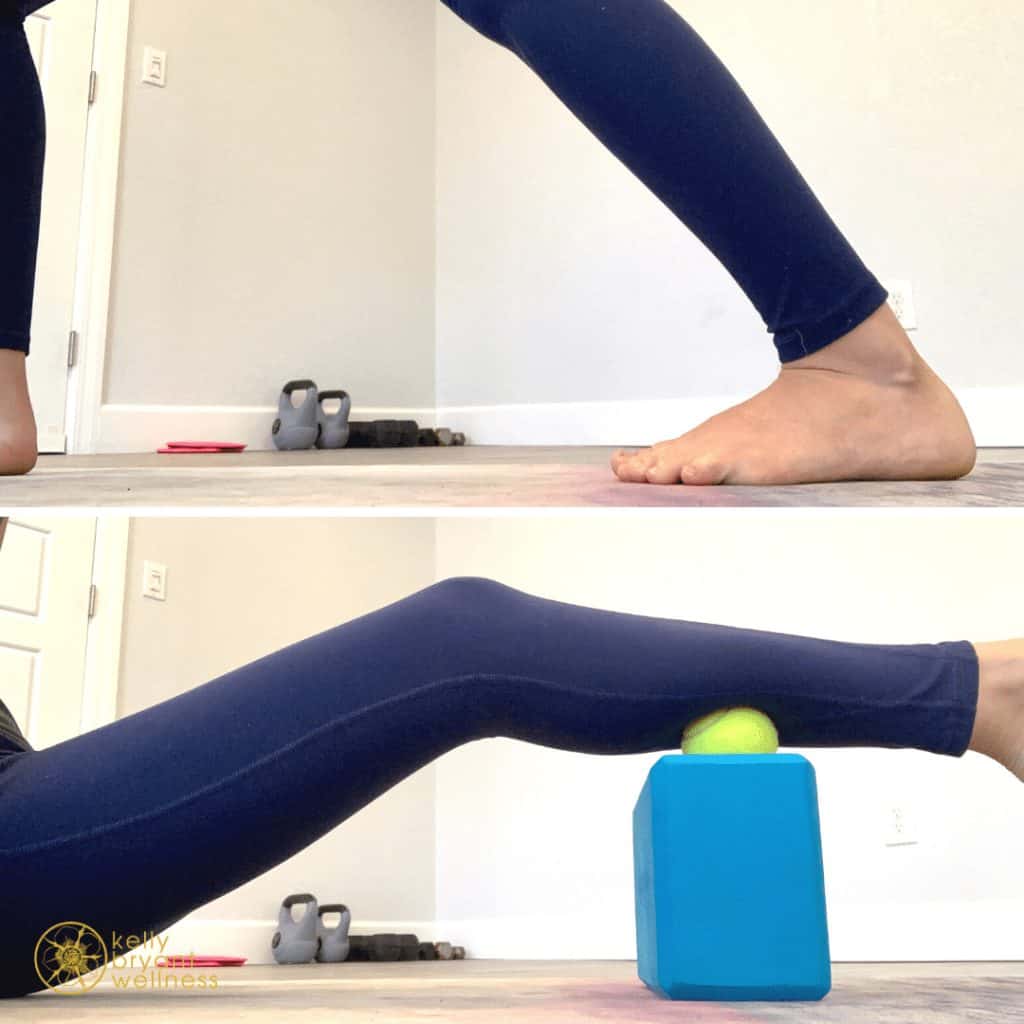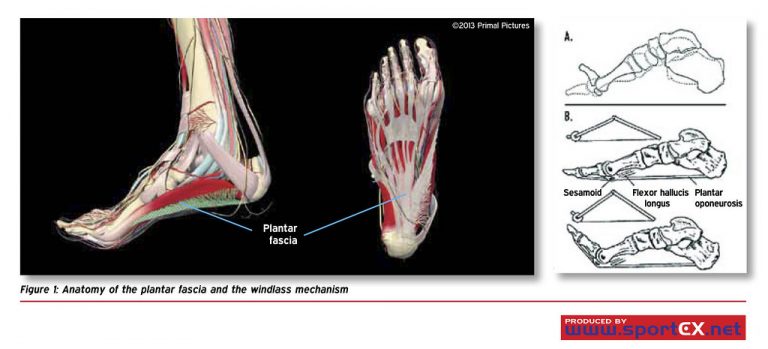
If you have achey feet, you have a calf problem. If you have sore calves, you have a foot problem. It doesn’t really matter whether you feel it or you’ve noticed it before, it’s there.
Why? because your heel bone essentially “floats” between the calf and underside of the foot. (It also is secured side-to-side to the ankle, but that’s a conversation for another day.)
What that means is that if your calf is tight, it is going to be tugging your heel bone back, pulling on the connective tissue of the underside of your foot (aka plantar fascia, or the thing that hurts when you have plantar fasciitis). If your plantar fascia is tight or your arches are falling, that is going to tug your heel bone forward, creating more tension in your calf.
Even if you’ve never been diagnosed with plantar fasciitis, if you have random foot pain or achey feet, you want to address your calves, too, and vice-versa.
What causes calf and foot pain
- Lack of support in the arch: Your foot is meant to have an arch, which helps absorb impact when you walk and run. If the feet become atrophied or weak or other outside habitual movement patterns force the foot to become more flat, you: 1. lose your shock absorbance, creating more impact up through the ankles and knees, and 2. cause more tug on the heel bone, creating pain either in the foot itself or in the calf.
- “Weight gain”: If your body weighs more than the arch of your foot can support, this could contribute to the arch falling and creating pain, as describe above. However, some people who weigh more than average do have foot pain, but many don’t. Just as you could lose weight to lessen the demand on your arch, you also could strengthen your feet to support you, no matter how much you weigh.
- Wearing high heels: We’ll talk more about shoes below, but long story short: I don’t believe that shoes with poor support create foot problems. However I do believe that high heels create foot problems. When you elevate your heel all day, you shorten your calves. Over time (think: daily wear for years), your calf muscle actually becomes shorter all the time — not just when you have your heels on. Then, when you go to stand flat-footed, your calves pull your heel bone, your heel bone pulls your plantar fascia, and you have calf or foot pain (usually foot pain, cause your calves are probably jacked. The pain doesn’t go there because those muscles are super-trained up).
What cures calf and foot pain?

- Creating support in the arch: Many doctors treating plantar fasciitis recommend wearing more supportive shoes or orthotics, but I actually disagree with this recommendation. (Disclaimer: I’m not a doctor, don’t listen to me over your provider or your own intuition, yada yada. But, feel free to hear me out and do some critical thinking of your own.) Sure, if you’re in acute pain, wearing more supportive shoes for a limited period of time can help keep your arch up, so you can take other measures to improve the foot’s support. However, if your arch is falling, there is a reason. A rant for another day, but: Western medicine LOVES curing symptoms instead of causes. “So your arch is collapsing and that makes your foot hurt? Well, let’s prop your arch back up,” instead of, “Let’s figure out why your arch is collapsing.” I actually think wearing supportive shoes all the time contributes to weak arches. Imagine if you were in a wheel chair all the time. Your legs would get really weak because they aren’t having to work to hold you up, right? Orthotics are like a wheel chair for your foot. Necessary when you’re injured, but you best be getting out of it and working your strength back up ASAP. So, what do you do instead? Be barefoot! Now, I’m not a barefoot running fanatic who insists on doing everything au naturale, but a barefoot practice like yoga is awesome for rebuilding foot strength. You could also commit to just doing a little bit barefoot at first; like cooking dinner or washing the dishes. If your feet hurt — stop! But, over time, you want to work up to having more strength to stay barefoot longer.
- Adjusting your posture: Are you a toe walker? Even just a little? Do you walk with your hips way forward over your toes? I am always, always making the same postural adjustments for my clients. If you back your hips way up so they’re actually over your heels, it will solve both problems. The shift of your hips backward opens up the angle at the achilles tendon, and drops your weight into your heels, so you’re less likely to walk with more weight on your toes, shortening your calves.
- Rolling and stretching your calves: Again, if you have a foot problem, you have a calf problem. Get a tennis ball in there and find the sticky spots. Stretch your calves before and after each workout or even a long walk. If you don’t exercise in a given day, give them a good stretch before bed.
- Roll and stretch your feet: Sure, you can go ahead and roll and stretch your feet, too. It can’t hurt and might even help, just not in a vacuum. Here is just one resource for foot and calf stretches and massage techniques.
Need more recommendations? Schedule a consult with me and let’s get to the bottom of your foot issues.


